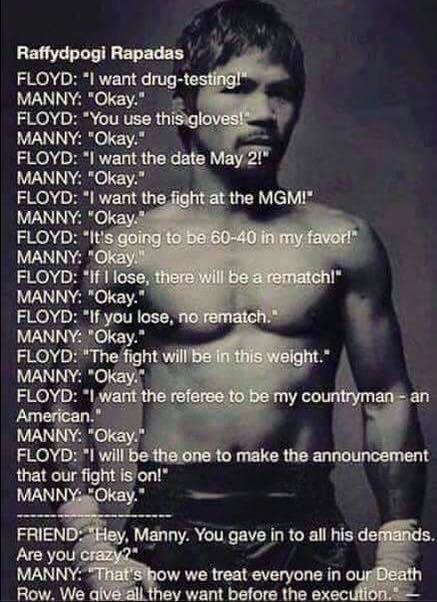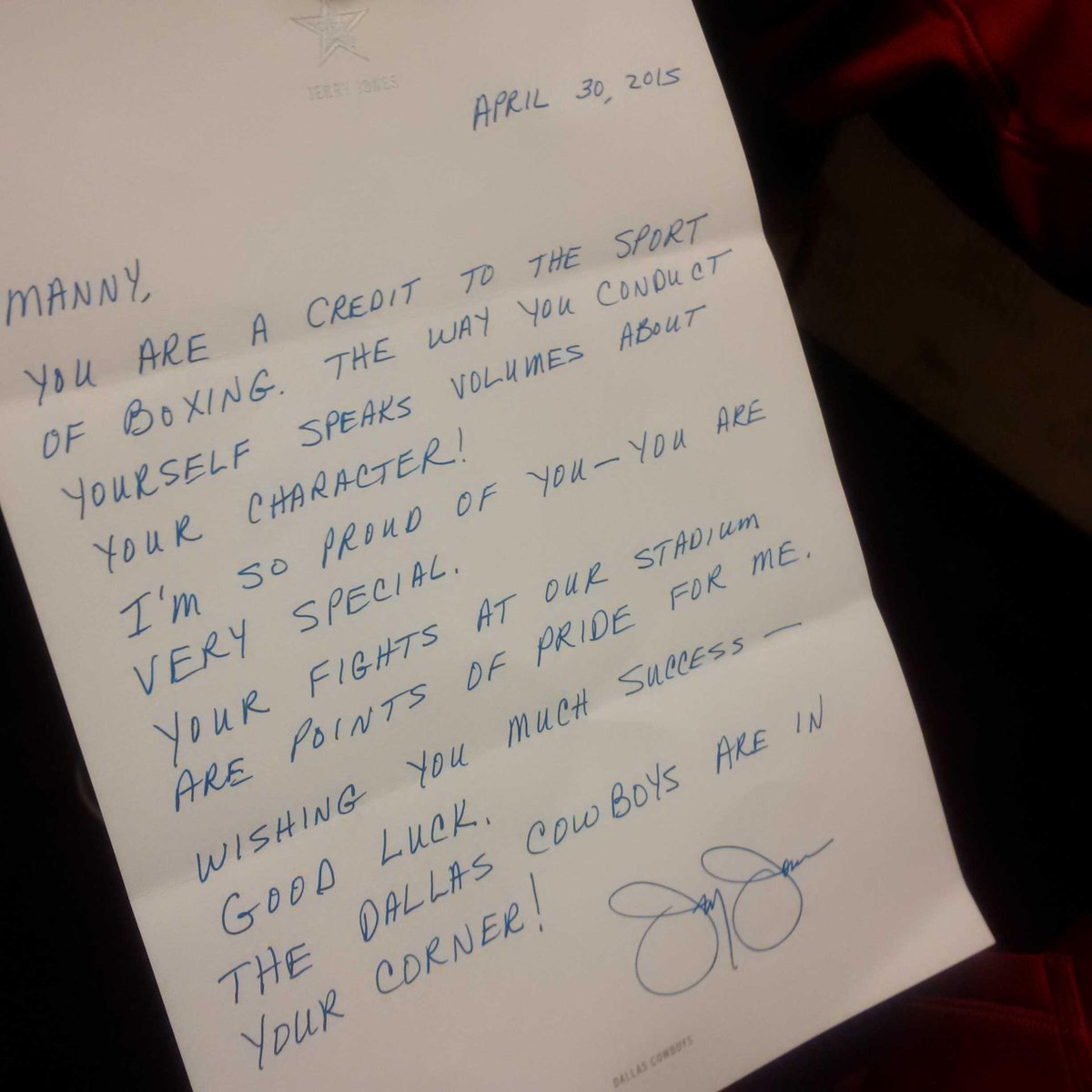3. Be first, be last
2. Angles before, during, and after
1. Offensive variety
Sounds simple, but nothing with Floyd ever really is. Let's tackle each point one at a time.
#3 - BE FIRST, BE LAST
As noted in part one, Mayweather isn't really a counter puncher so much as he is an out-fighter with great counters. His bread and butter has always been that flexible jab and, more frequently against southpaws, the awkward and stinging lead right hand. These are one-and-done techniques because that's how Mayweather likes it. He will counter when pressed, but those counters really only serve to give him room to escape so that he can resume his preferred range. Even his knockout punches are usually followed by some automatic defensive maneuvers.
Mayweather likes distance because it allows him to see his opponents' attacks coming. The more room he has, the more easily he can make his adversary miss. And because he knows his opponents are trying to do the same thing to him, he fills the empty space between punches with feints and flinches, constantly threatening only to attack when the opponent finally relaxes and takes a breath. Mayweather loves to make his opponents think, and once they're thinking, he's got them beat. So what Manny Pacquiao do about it?
Well, as it turns out Manny Pacquiao is actually a pretty solid counter puncher, and puts together great combinations when given the opportunity to plant his feet.
#2 - ANGLES BEFORE, DURING, AND AFTER
Angular footwork is one of Pacquiao's best assets. Moving in and out and from side to side, he peppers his opponents with combinations and pot shots as they turn to catch up with him. Floyd Mayweather has great footwork, but even good footwork requires a fighter to turn himself to face his opponent. There's simply no way for Mayweather to avoid moving his feet to keep up with Pacquiao, and it's during those little turns and shifts, when Mayweather is out of position to punch or defend properly, that Pacquiao can find opportunities.
Miguel Cotto gave Mayweather one of the toughest fights of his career--shockingly, he spent lengthy portions of the bout boxing with Mayweather, circling around him and sneaking sharp punches through while he was playing catch-up.
Again, for Pacquiao this is all a game of initiative. Mayweather has always thrived on holding the initiative. Whether countering or leading, you can't help but get the impression that most of Mayweather's opponents are doing exactly what he wants and expects them to do.
#1 - OFFENSIVE VARIETY
As my co-host and co-conspirator Patrick Wyman said on the latest episode of Heavy Hands, "variety is the spice of life." And for Floyd Mayweather, it is the smell of defeat.
There's a simple analogy that describes Mayweather's boxing genius perfectly. His cold confidence and mechanical efficiency is like nothing so much as the behavior of a boxing machine. A boxing supercomputer, even. As a boxing computer, Mayweather knows allthe algorithms. Especially after 47 fights, he's seen enough fighters to know the signs and tells of every basic combination and movement. Step hard to his right? Floyd is preparing to shoulder roll or roll under before your foot even lands. Pawing with your jab? You'd best believe there's a counter right coming over the top of that very soon.
But what happens to a computer when it gets a confusing, unknown equation? Or even a completely nonsensical one? Here's a very small example from the DeMarcus Corley fight we looked at earlier that might demonstrate this point.
Corley steps in on Mayweather with a left uppercut to the body--a great distance closing punch for the southpaw. As he closes the distance he shifts into an orthodox stance and comes shoulder-to-chest with Floyd, and immediately throws two punches with what is now his lead left hand, a hook to the chest that gets Floyd's attention, and a short, clean punch to the jaw. I can tell you now, that's not a combination Mayweather sees every day.
@sgotwalks .......




